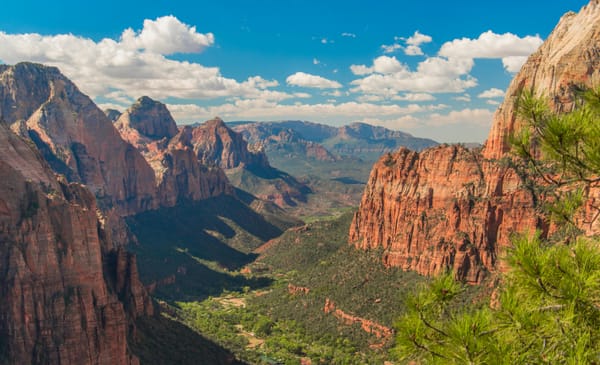Monday☕️

Trending:
- On June 6, 2025, protests began in Los Angeles following Immigration and Customs Enforcement (ICE) raids targeting undocumented immigrants in areas such as Paramount and Compton. The raids, part of the Trump administration’s immigration enforcement efforts, led to over 40 arrests, prompting widespread demonstrations. Protesters, including community members and activists, oppose the raids, arguing they disrupt communities and create fear, a sentiment echoed by Los Angeles Mayor Karen Bass. The protests have continued for three days, with thousands participating, some blocking major roads like the 101 Freeway and engaging in vandalism, including setting cars on fire and defacing property.
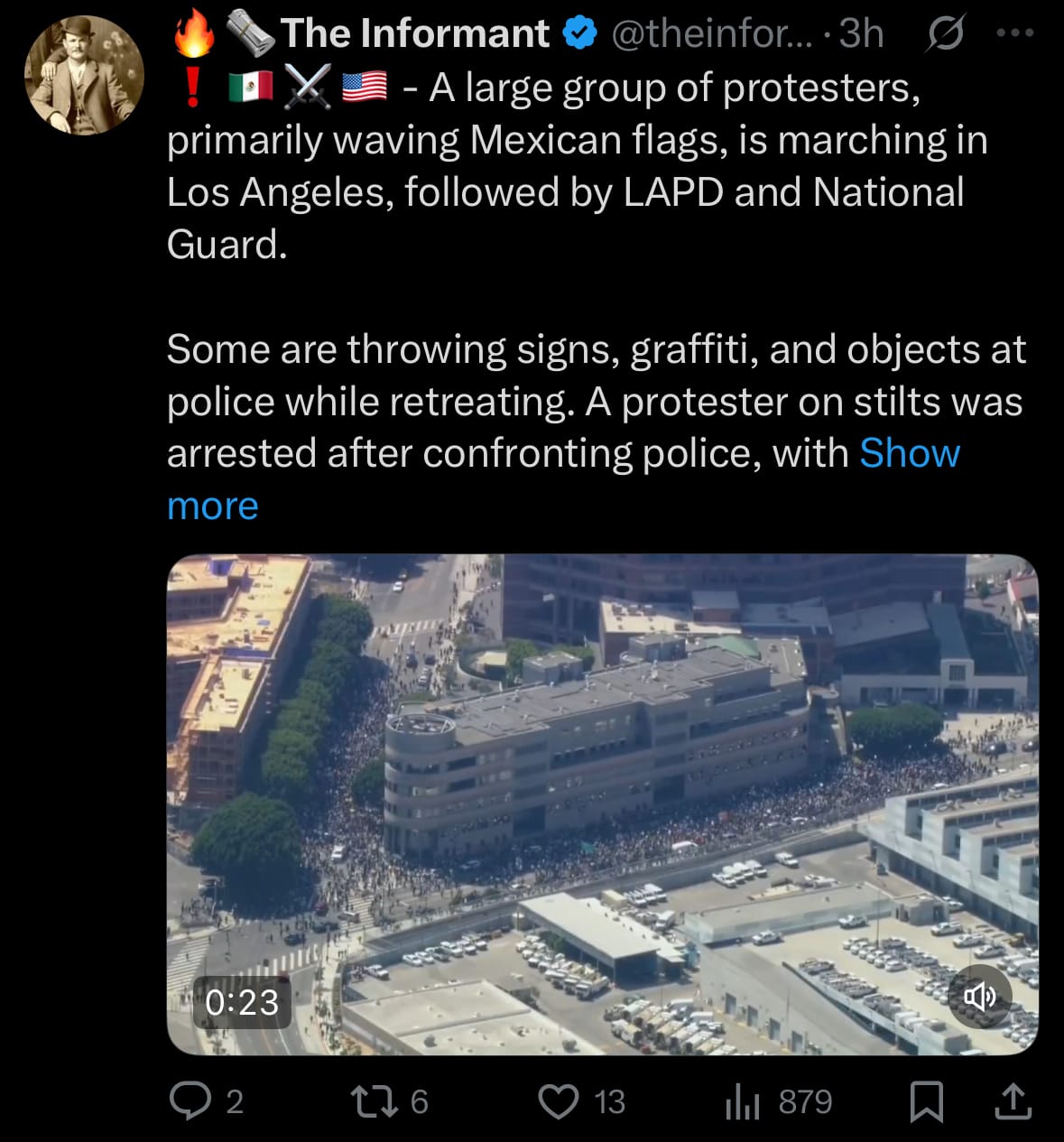
- The response from law enforcement has involved significant resources to manage the unrest. The Los Angeles Police Department (LAPD) and California Highway Patrol initially used tear gas and flashbangs to disperse crowds. On June 8, the LAPD issued a citywide tactical alert due to the protests’ scale. Additionally, 2,000 National Guard troops were deployed to Los Angeles by the Trump administration, to address the escalating situation.
Economics & Market:
- Yesterday’s commodity market:
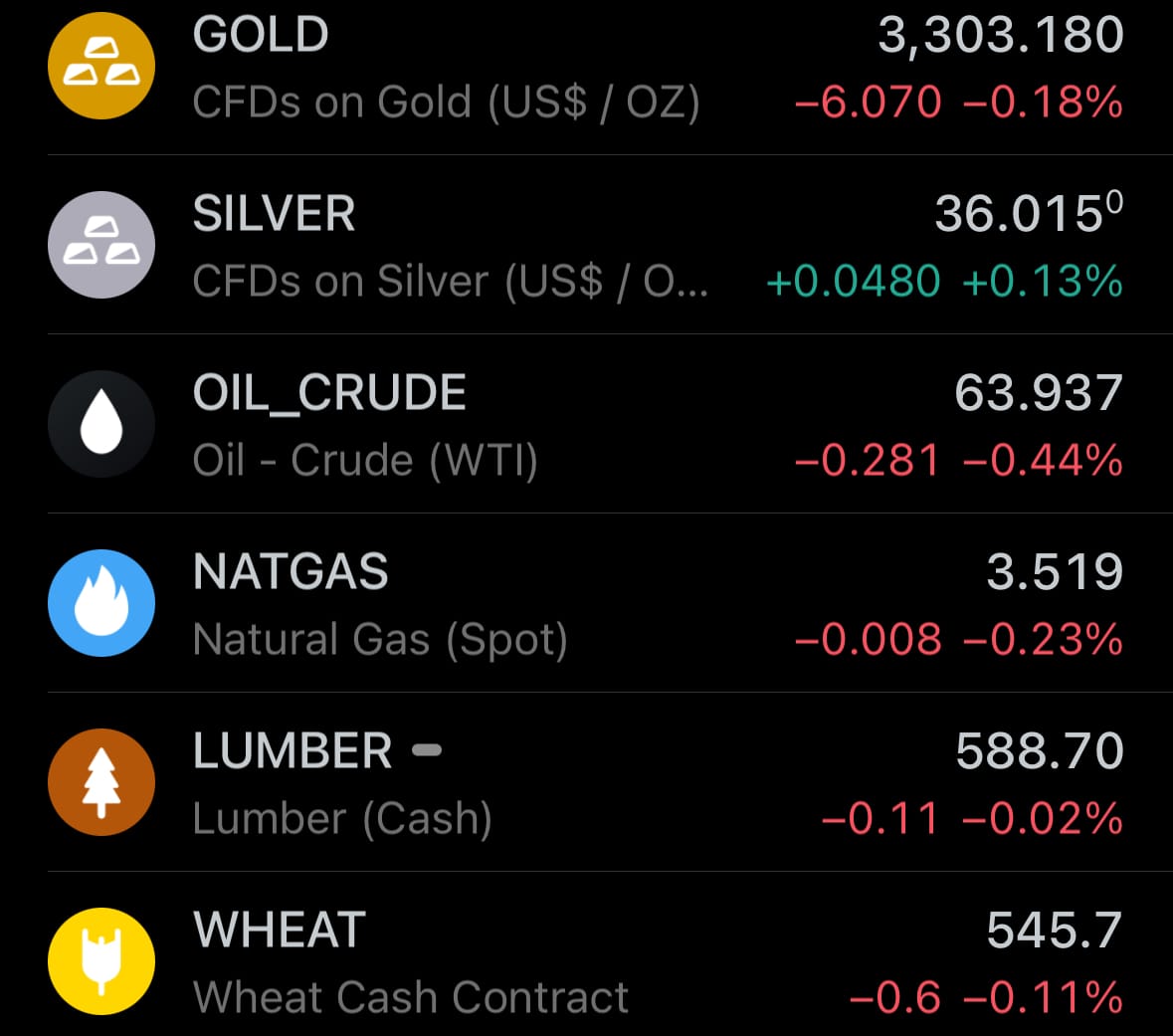
- Yesterday’s crypto market:
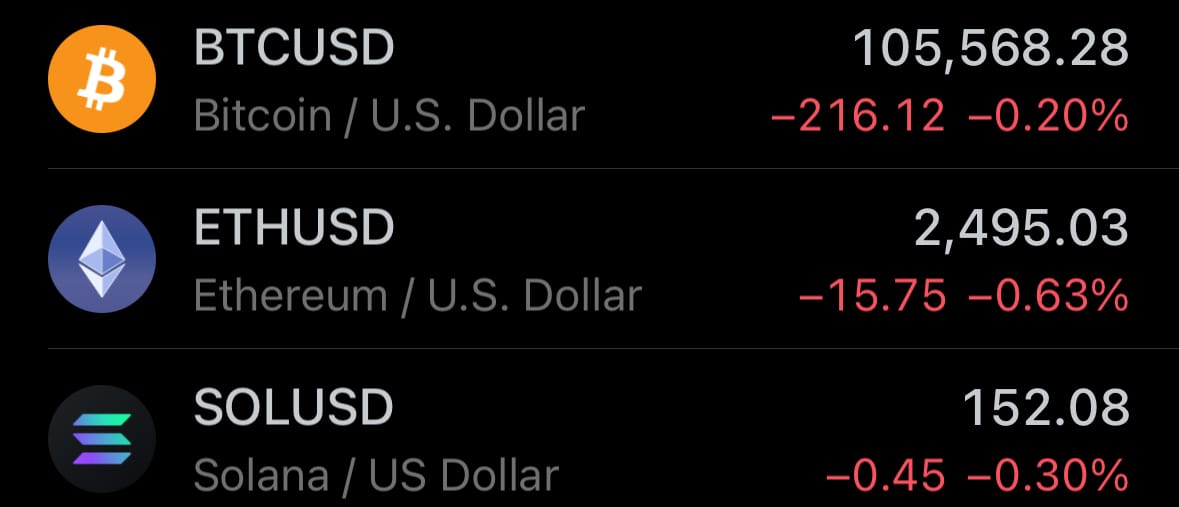
Environment & Weather:
- Yesterday, June 8, 2025, Suining County in Hunan Province, China, experienced severe flooding triggered by heavy rainfall that started the previous evening. The floods caused landslides, damaged roads, and led to widespread waterlogging, affecting over 13,000 residents. Emergency crews were deployed to clear roads and assist affected communities, with no specific casualties reported in Suining as of that date.
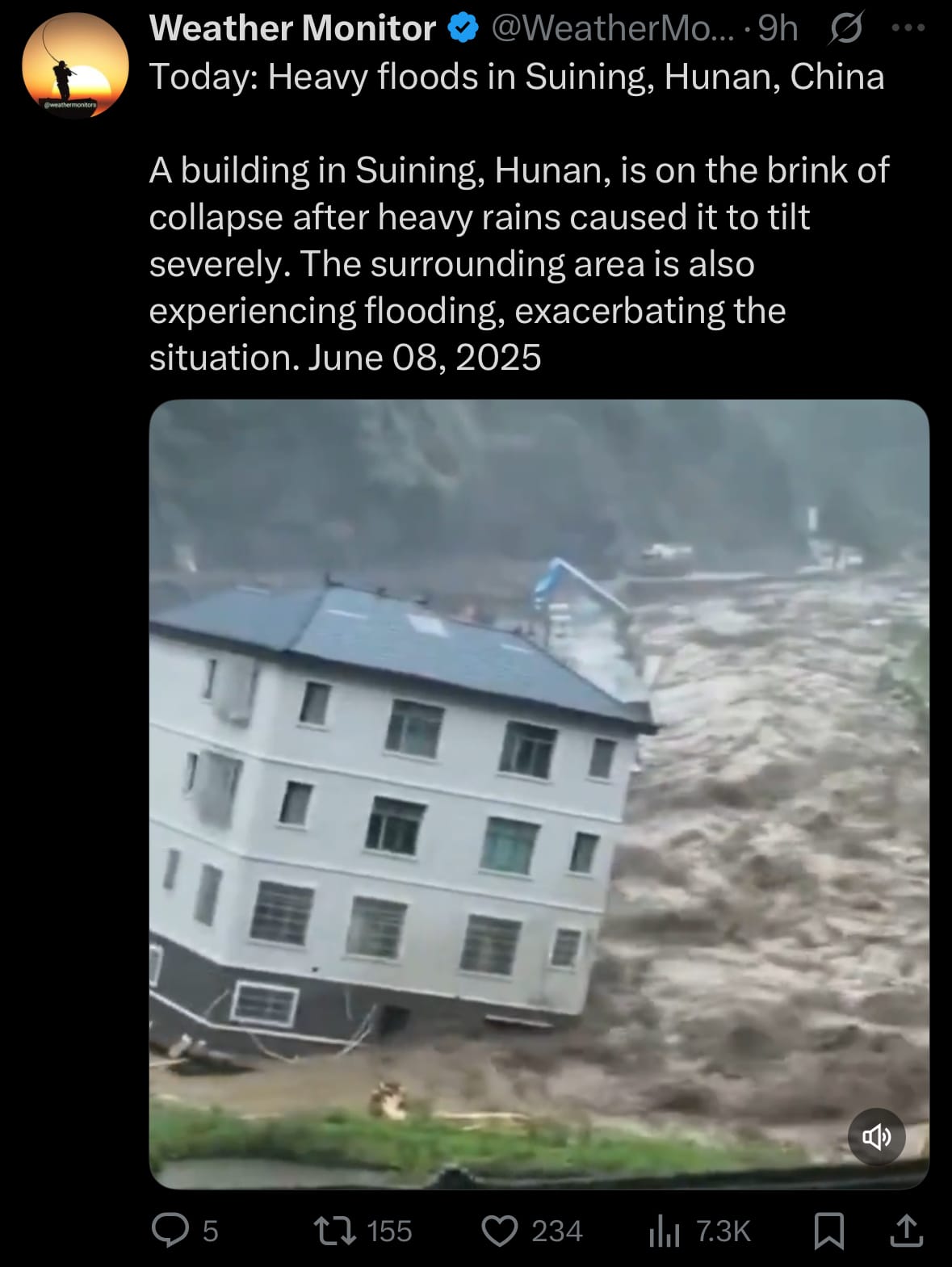
- The flooding extended beyond Suining, impacting nearby cities like Yiyang, which faced significant urban flooding, and Changsha, where university dormitories were inundated, leading some students to seek temporary shelter in hotels. The heavy rains are part of a recurring pattern of extreme weather in Hunan, straining local infrastructure.
Columbia Earthquake:
- Yesterday, June 8, 2025, a magnitude 6.5 earthquake struck central Colombia, with its epicenter near Paratebueno, about 187 kilometers east of Bogotá, as reported by the Colombian Geological Service and the German Research Centre for Geosciences. The quake, occurring at a shallow depth of less than 30 kilometers, caused noticeable shaking in Bogotá and nearby areas, prompting residents to evacuate buildings out of caution. Minor structural damage, such as cracked roads and buildings, was reported, mainly in rural areas near the epicenter, but no significant casualties or injuries were confirmed by the end of the day.
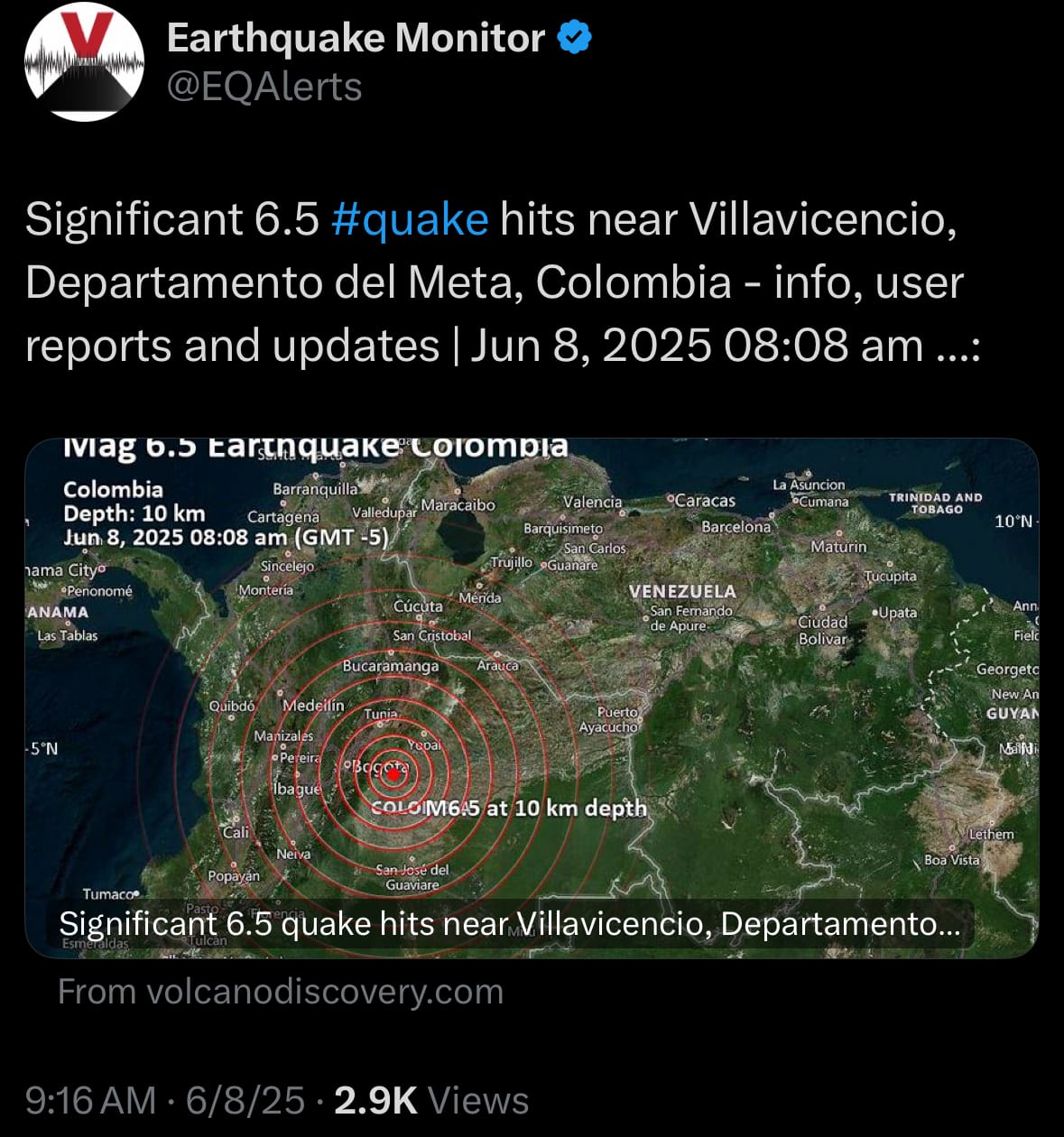
- Colombian authorities responded promptly, deploying emergency services to evaluate damage and ensure public safety. The shallow depth of the earthquake increased its felt intensity, raising concerns about potential damage to less reinforced structures. Colombia, located on the Pacific Ring of Fire, frequently experiences seismic activity, but this quake stood out due to its strength and proximity to populated areas. Monitoring for aftershocks and further damage assessments continues, as authorities work to address the impacts of the event.
Space:
- Yesterday, June 8, 2025, SpaceX launched a Falcon 9 rocket from Vandenberg Space Force Base in California, deploying 26 Starlink satellites into low-Earth orbit. The mission, part of the Starlink Group 15-8, utilized a reusable Falcon 9 booster on its seventh flight, which landed on a droneship in the Pacific Ocean after separation. This launch, SpaceX’s 70th Falcon 9 mission of the year, further expands the Starlink constellation to enhance global high-speed internet access.
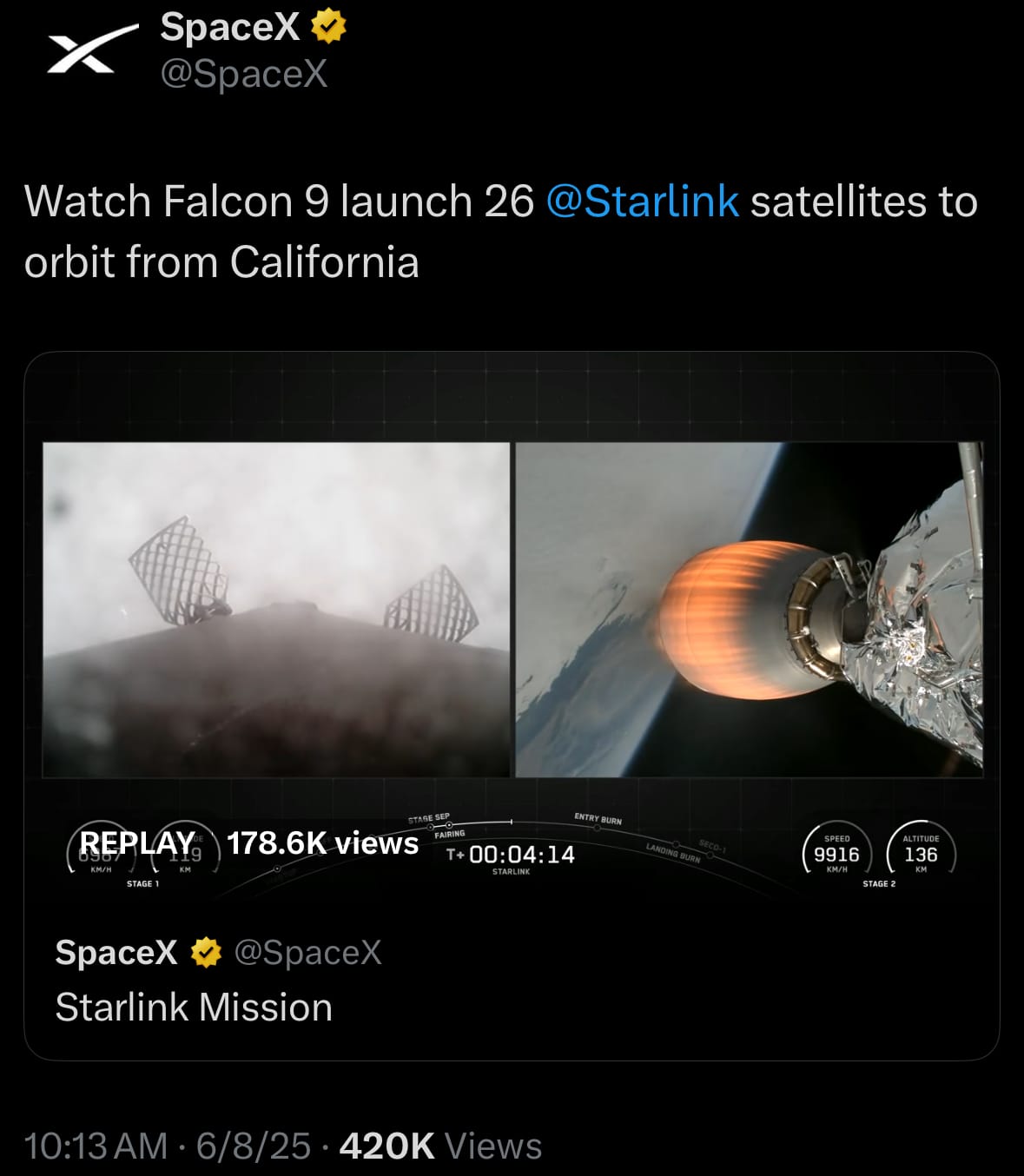
- On June 7, 2025, SpaceX launched a Falcon 9 rocket from Cape Canaveral Space Force Station in Florida, deploying the SiriusXM SXM-10 satellite into geosynchronous transfer orbit. Built by Maxar on its 1300-class platform in Palo Alto, California, SXM-10 is the 11th digital audio radio satellite for SiriusXM. It features a nearly 10-meter-wide mesh reflector designed to transmit SiriusXM programming to radios, including those in moving vehicles, supporting the company’s satellite radio services across North America. The Falcon 9’s reusable first stage, on its eighth flight, landed successfully on a droneship after separation.
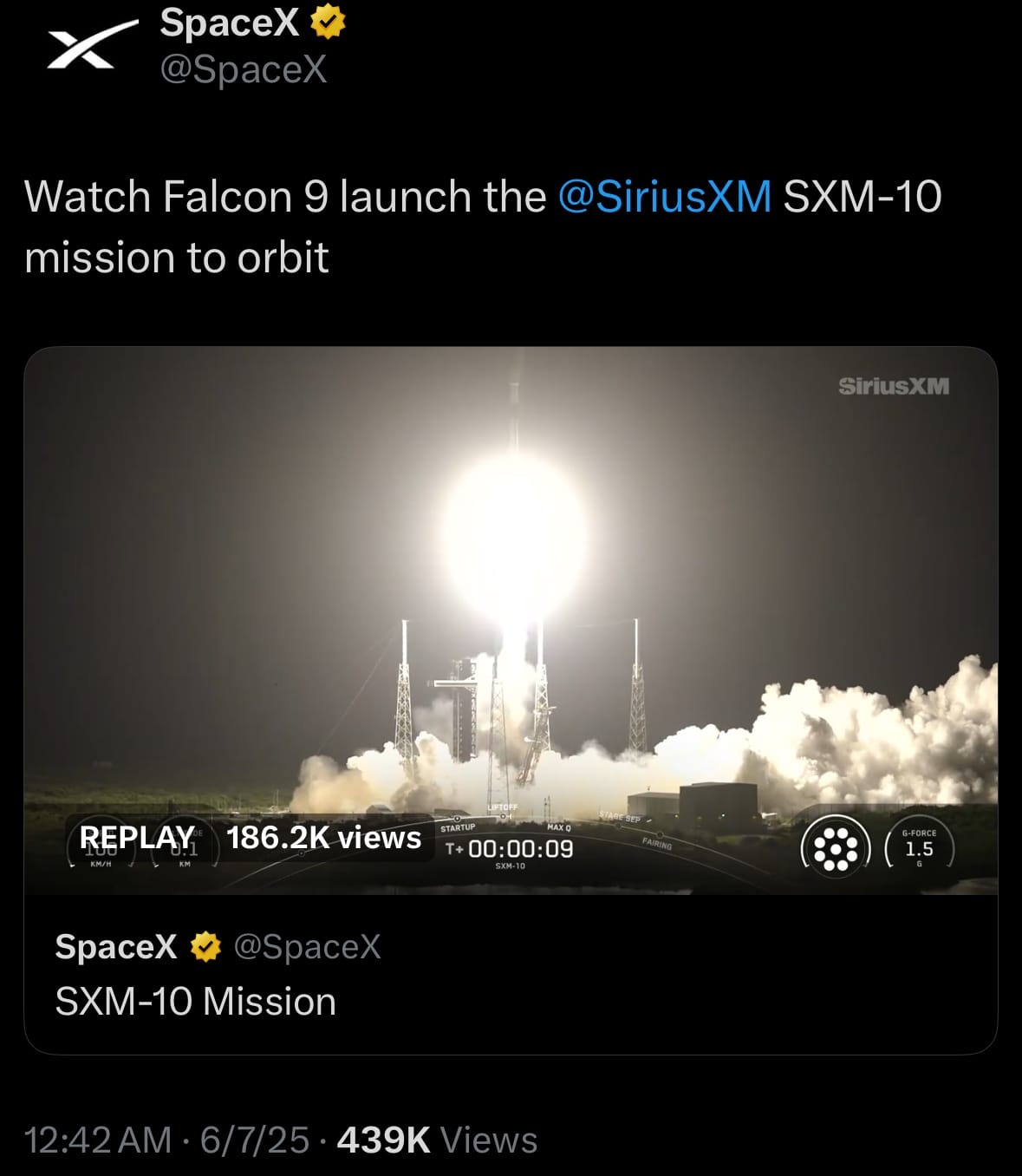
- The SXM-10 mission experienced weather-related delays due to lightning and storms but proceeded successfully once conditions improved. The satellite was deployed into a subsynchronous transfer orbit, setting it up to enhance SiriusXM’s broadcast capabilities for audio entertainment and information. Maxar’s design ensures reliable signal transmission, while the launch, SpaceX’s 48th from Florida’s Space Coast in 2025, demonstrates the company’s role in delivering communication satellites to orbit.
Statistic:
- Largest assets on Earth by market capitalization:
- Gold: $22.321T
- 🇺🇸 Microsoft: $3.496T
- 🇺🇸 NVIDIA: $3.456T
- 🇺🇸 Apple: $3.045T
- 🇺🇸 Amazon: $2.267T
- 🇺🇸 Alphabet (Google): $2.114T
- Bitcoin: $2.101T
- Silver: $2.037T
- 🇺🇸 Meta Platforms: $1.754T
- 🇸🇦 Saudi Aramco: $1.599T
- 🇺🇸 Broadcom: $1.161T
- 🇺🇸 Berkshire Hathaway: $1.064T
- 🇹🇼 TSMC: $1.064T
- 🇺🇸 Tesla: $950.63B
- 🇺🇸 Walmart: $779.84B
- 🇺🇸 JPMorgan Chase: $738.48B
- 🇺🇸 Visa: $709.21B
- 🇺🇸 Eli Lilly: $691.14B
- 🇨🇳 Tencent: $600.42B
- SPDR S&P 500 ETF Trust: $549.87B
- 🇺🇸 Mastercard: $535.87B
- 🇺🇸 Netflix: $528.33B
- 🇺🇸 Oracle: $487.99B
- 🇺🇸 Costco: $450.10B
- 🇺🇸 Exxon Mobil: $449.36B
History:
- The Suez Canal is a man-made waterway in Egypt that connects the Mediterranean Sea to the Red Sea, enabling ships to travel between Europe and Asia without circling Africa. Its history began in ancient times but reached a pinnacle with its modern construction in the 19th century. Around 1850 BC, Egyptian pharaohs like Senusret III dug small canals linking the Nile River to the Red Sea through the Bitter Lakes to aid trade and irrigation. These channels were shallow, prone to silting, and only functional seasonally. Later, Persian, Greek, and Roman rulers, including Darius I (522–486 BC) and Ptolemy II (283–246 BC), tried similar projects, but none established a permanent sea-to-sea route. The modern canal took shape in 1854 when French diplomat Ferdinand de Lesseps convinced Egypt’s ruler, Sa’id Pasha, to approve a 100-mile waterway from Port Said on the Mediterranean to Suez on the Red Sea. Construction began in 1859, involving over 1.5 million workers who faced scorching desert conditions, cholera outbreaks, and costs that doubled to $100 million. Initially, Egyptians were forced to dig by hand, but steam-powered dredgers later accelerated progress. The canal opened on November 17, 1869, with grand celebrations, cutting the Europe-Asia shipping route by thousands of miles.
- The canal’s critical role in global trade made it a focal point for conflict. The Suez Canal Company, mostly French-owned, ran it, but Egypt’s 44% stake offered little control. In 1875, Egypt’s debt-strapped Khedive Ismail sold his shares to Britain for £4 million, strengthening British influence, vital for its trade with India. Britain occupied Egypt in 1882 to secure its hold. In 1956, Egypt’s President Gamal Abdel Nasser nationalized the canal to fund the Aswan Dam, triggering the Suez Crisis. Britain, France, and Israel invaded, but U.S. and Soviet pressure forced their withdrawal, signaling a global power shift. The canal closed during the 1967–1975 Arab-Israeli wars, trapping ships and costing Egypt millions. Reopened in 1975, it was expanded in 2015 to accommodate larger ships. Its vulnerability was clear in 2021 when the Ever Given blocked it for six days, halting $9 billion in daily trade. The Suez Canal handles around 12-15% of global trade and around 30% of global container traffic.
Image of the day:
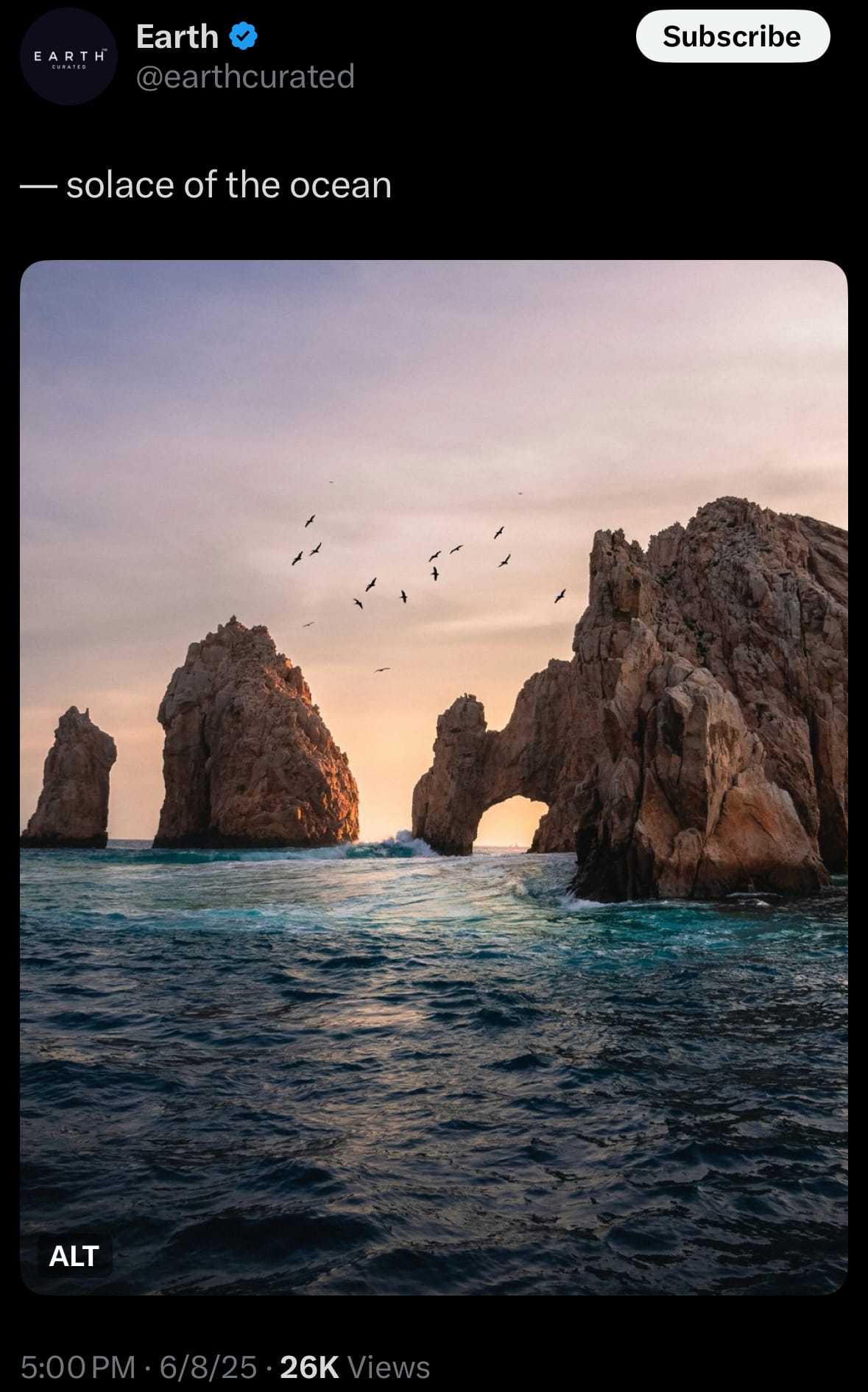
Thanks for reading!
Earth is complicated, we make it simple.
Click image to view the Earth Intelligence System:



Support/Suggestions Email:
earthintelligence@earthintel.news



